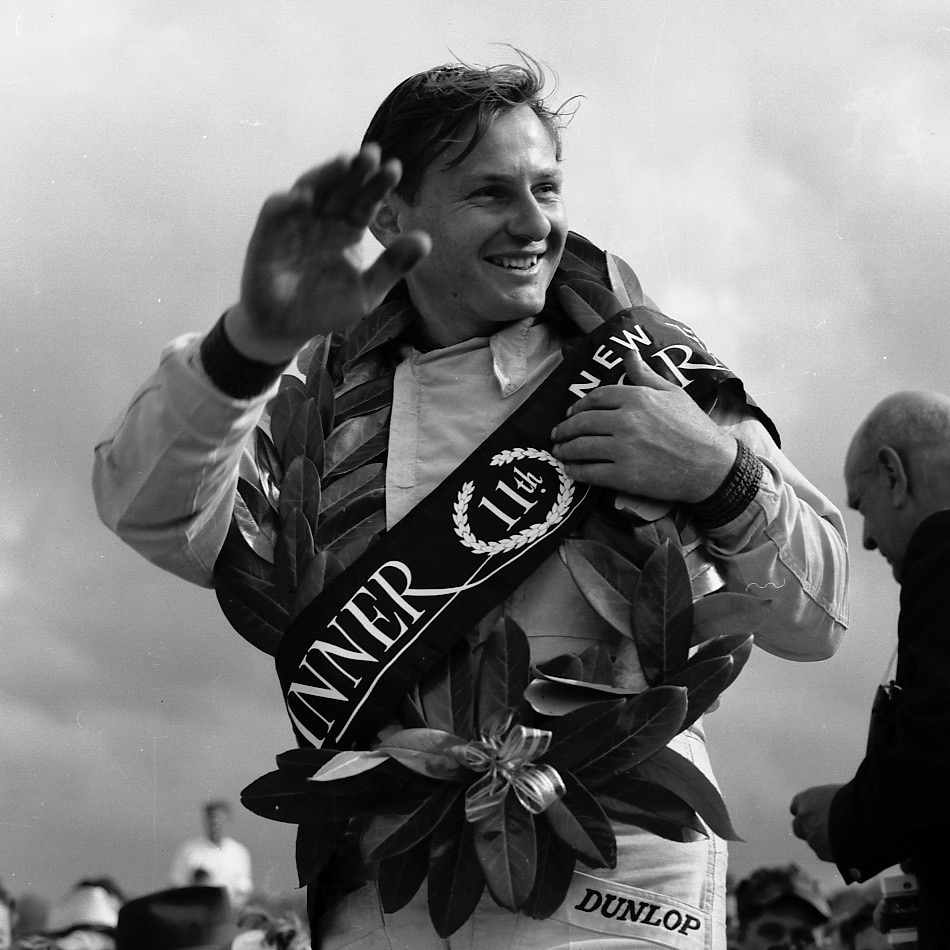
I was less than a year into my job as a sportswriter at the daily newspaper in Grand Rapids, Michigan, when the Associated Press teletype machine delivered the news that Bruce McLaren had died. McLaren, 32 years old and perhaps at the height of his racing career, was testing his new M8D Can-Am car when the rear bodywork came loose as McLaren was driving at speed on the straightaway leading to the Woodcote corner on the Goodwood racing circuit in England.
None of the others working with me on the sports desk that morning understood my reaction as I read the words printed on the pale-yellow paper that fed from a cardboard box into the teletype, where a “copy boy” would tear off the stories and deliver them to the news, Sunday or sports department.
I was devastated by McLaren’s death. Journalists are to be objective; “no cheering in the press box” was more than an adage. It was a policy. Even sportswriters who were paid to cover not wars or courts or even city hall but games — sometimes other reporters would refer to us as the “toy department” — were not to have heroes.
But there are games that sometimes turn deadly. Early on I realized that athletes I covered might blow out a knee in a football game. But those who raced cars too often died in the process, which is why Hemingway supposedly wrote that there were only three “sports” — bullfighting, mountain climbing and auto racing. Everything else was merely a game.
I’d started covering motor sports while in college and had known other drivers who had died in competition or in testing. But McLaren’s death was different. Less than a year earlier, I’d been invited to a media event at the Detroit offices of Reynolds Aluminum, one of Team McLaren’s primary Can-Am series sponsors. The event was designed to help publicize the upcoming Can-Am race to be held on the road course at Michigan International Speedway.
As was — and is — my habit, I arrived early. Bruce McLaren was sitting on a couch and invited me to join him. As we talked, we learned that we had something in common. No, I wasn’t a racer. I was a writer. But we’d both had to deal with a childhood hip disease that left us with a slight limp and, I think, an early determination to overcome whatever obstacles we might encounter.
Though a racer, not a writer, McLaren did an autobiography with automotive journalist Eoin Young. Commenting on the death of one of the McLaren team’s drivers, McLaren wrote:
“The news that he had died instantly was a terrible shock to all of us, but who is to say that he had not seen more, done more and learned more in his few years than many people do in a lifetime? To do something well is so worthwhile that to die trying to do it better cannot be foolhardy. It would be a waste of life to do nothing with one’s ability, for I feel that life is measured in achievement, not in years alone.”
Those same words applied to McLaren’s life, and death.

I’m sharing all of this now, many years after McLaren’s death, because 16 cars bearing his name — cars that raced at Indy, in the Can-Am series, in Formula One, at Le Mans, as well as some of the recent McLaren supercars — will be on display July 7 to August 27 at the Louwman, the Nationaal Automobiel Museum of Netherlands in The Hague.
The exhibit, I’m sure, is being done in part because of the recent release of a documentary movie about McLaren’s life and racing career. The movie was screened at Indianapolis in May and shown at the recent Cinetopia Film Festival in Detroit and nearby Ann Arbor. Automotive museums are hosting showings, for example, the Petersen in Los Angeles, on June 24.
I’ve not seen the movie, but I will as soon as I can, and I know I’ll be watching through tears.





